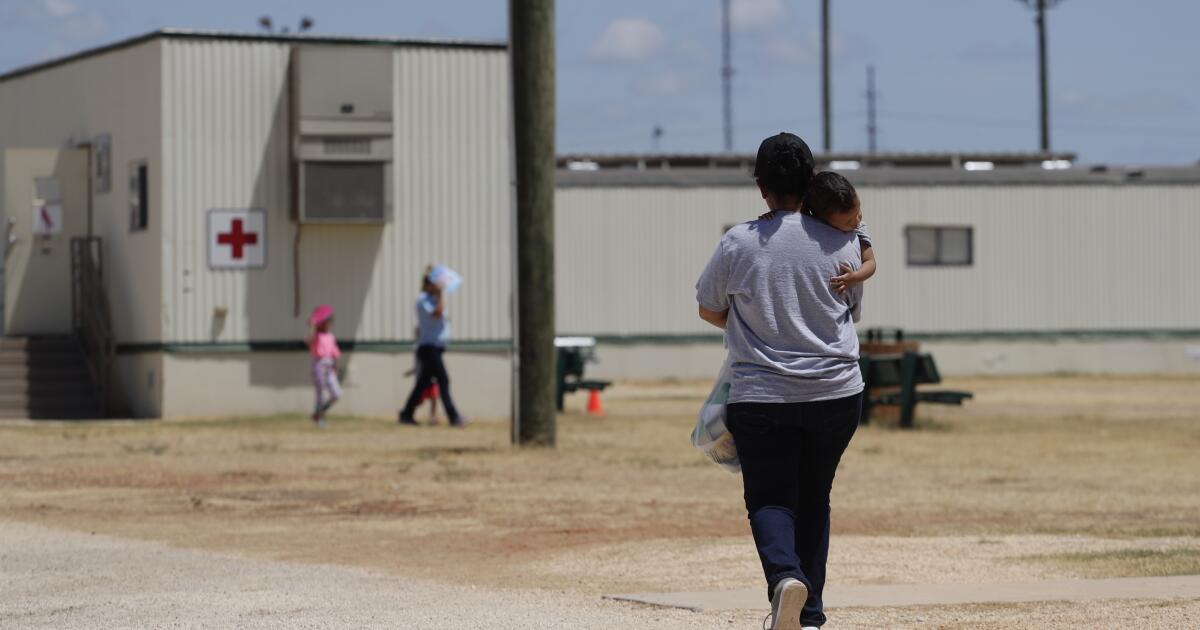Judge blocks Trump policy to detain migrant children turning 18 in adult facilities
A federal judge has temporarily blocked a new Trump administration policy to keep migrant children in detention after they turn 18, moving quickly to stop transfers to adult facilities that advocates said were scheduled for this weekend.
U.S. District Judge Rudolph Contreras on Saturday issued a temporary restraining order to U.S. Immigration and Customs Enforcement not to detain any child who came to the country alone and without permission in ICE adult detention facilities after they become an adult.
The Washington, D.C., judge found that such automatic detention violates a court order he issued in 2021 barring such practices.
ICE and the U.S. Department of Homeland Security didn’t immediately respond Saturday to emails seeking comment.
The push to detain new adults is yet another battle over one of the most sensitive issues in President Trump’s hard-line immigration agenda — how to treat children who cross the border unaccompanied by adults.
The Associated Press reported Friday that officials are offering migrant children age 14 and older $2,500 to voluntarily return to their home countries. Last month a separate federal judge blocked attempts to immediately deport Guatemalan migrant children who came to the U.S. alone back to their home country. Some children had been put on board planes in that late-night operation before a judge blocked it.
“All of these are pieces of the same general policy to coerce immigrant youth into giving up their right to seek protection in the United States,” said Michelle Lapointe, a lawyer for the American Immigration Council, one of the groups that asked Contreras to intervene in a filing made early Saturday, just after midnight.
Unaccompanied children are held in shelters run by the Office of Refugee Resettlement, which isn’t part of ICE. Contreras’ 2021 order instructed federal officials to release minors who turn 18 from those shelters to “the least restrictive setting available.” He ruled that that is what’s required by federal law as long as the minor isn’t a danger to themselves or others and isn’t a flight risk. Minors are often released to the custody of a relative, or maybe into foster care.
But lawyers who represent unaccompanied minors said they began getting word in the last few days that ICE was telling shelters that children who were about to turn 18 — even those who had already-approved release plans — could no longer be released and would instead be taken to detention facilities, possibly as early as Saturday. One email from ICE asserted that the new adults could only be released by ICE under its case-by-case parole authority for “urgent humanitarian reasons” or “significant public benefit.” From March through September, ICE has paroled fewer than 500 people overall.
The plaintiffs argued that “release on parole is all but a dead letter” and that children aging out of shelters would experience lasting harm from unnecessary and inappropriate adult detention” in jails that might be overcrowded or in remote locations. The plaintiffs said that was especially true because some of the clients they cited had been victims of trafficking or had been abused, neglected or abandoned by their parents.
U.S. border authorities have arrested children crossing the border without parents more than 400,000 times since October 2021. A 2008 law requires them to appear before an immigration judge before being returned to their countries.
Children have been spending more time in government-run shelters since the Trump administration put them under closer scrutiny before releasing them to family in the United States to pursue their immigration cases.
The additional scrutiny includes fingerprinting, DNA testing and home visits by immigration officers. Over the summer, immigration officers started showing up and arresting parents.
The average length of stay at government-run shelters for those released in the U.S. was 171 days in July, down from a peak of 217 days in April but well above 37 days in January, when Trump took office.
Amy writes for the Associated Press.























